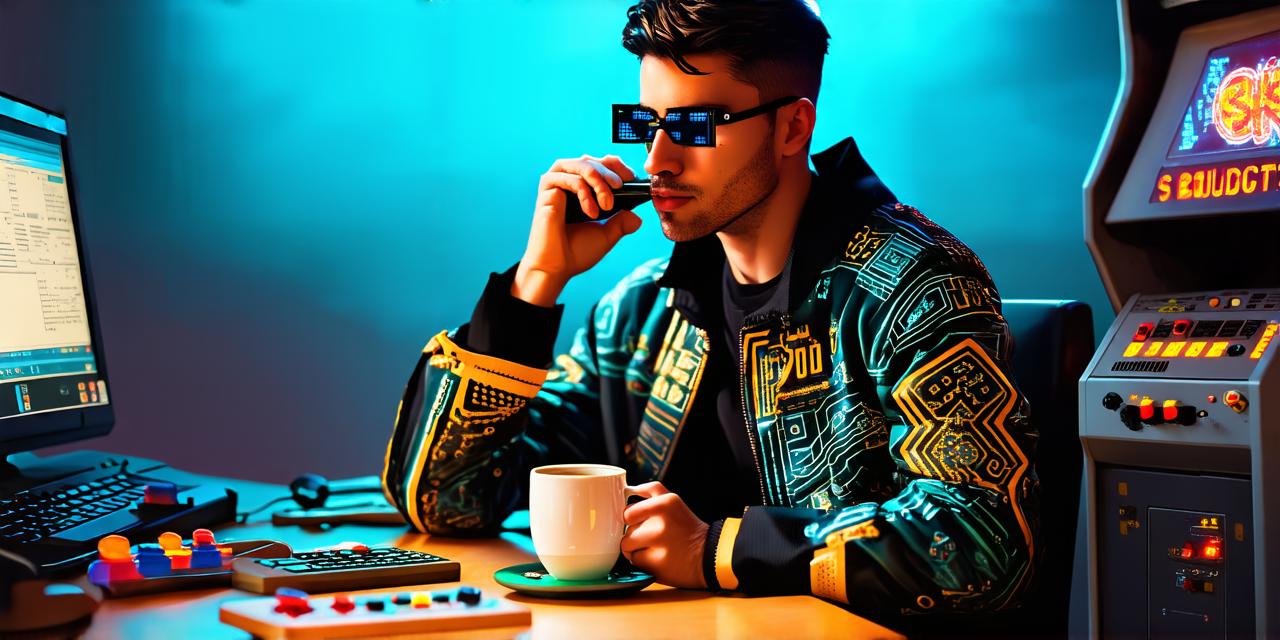I. Introduction
Before diving into the specifics of video game designer fashion, it is important to establish a basic understanding of who these individuals are and what they do.
Video game designers are responsible for creating engaging and immersive game worlds, characters, and storylines that captivate players and keep them coming back for more. They use a variety of tools and techniques to bring their ideas to life, including concept art, level design, and programming.
While there is no one-size-fits-all approach to fashion in the gaming industry, video game designers often find themselves working in teams that require collaboration and communication. As such, it can be helpful to consider how different styles and aesthetics might impact team dynamics and overall project success.
II. Personal Taste
One of the most significant factors that influences a video game designer’s fashion choices is their personal taste.
Designers often draw inspiration from various sources, including pop culture, art history, and music, to create unique and expressive looks that reflect their individuality. Some designers may prefer bold, vibrant colors and eye-catching patterns, while others might opt for more subdued, minimalist styles.
For example, indie game designer Katamari Damacy is known for her eclectic fashion sense, which often incorporates elements of Japanese street style, vintage clothing, and even cosplay. In an interview with Polygon, she explained that her love of fashion started as a child and has continued to evolve throughout her career:
“I’ve always had a deep love for fashion. As a kid, I would spend hours cutting out patterns from magazines and making my own clothes. Later on in life, I discovered thrift stores and secondhand shops and began to mix and match different styles to create unique looks.”
Similarly, game designer Shuhei Matsuno has spoken about his passion for fashion, particularly in relation to his work on the iconic video game series Tales of. In an interview with Famitsu, he explained that he often draws inspiration from real-world clothing and accessories to create characters that feel authentic and relatable:
“Fashion is an essential aspect of creating believable characters. When designing a character, I like to think about what they would wear in real life. It’s important to consider things like their occupation, personality, and cultural background when selecting clothing and accessories.”
III. Job Requirements
In addition to personal taste, video game designers must also take into account the job requirements of their profession.
Depending on the specific role they hold within a studio or team, designers may need to adhere to certain dress codes or uniforms. For example, artists and concept designers might be required to wear formal attire during meetings with clients or executives, while programmers and engineers might opt for more casual clothing that allows them to move freely and focus on their work.
Some game studios may also have specific guidelines regarding dress and grooming, such as facial hair policies or restrictions on visible tattoos. These regulations are often put in place to maintain a professional image and ensure that all team members present themselves in a manner that is consistent with the studio’s values and culture.
IV. Cultural Influences
Cultural influences can also play a significant role in shaping video game designer fashion choices.
Designers who work on games set in specific geographic locations or historical periods may be expected to incorporate elements of that culture into their designs. For example, a designer working on a game set in ancient Egypt might choose clothing and accessories that are characteristic of the region’s history and traditions.
Similarly, designers who work on games that feature characters from diverse backgrounds must consider how those characters would dress in their respective cultures. This can involve researching traditional garments, hairstyles, and other cultural artifacts to create authentic and believable representations of different peoples and places.
V. Case Studies: Examples of Unique Fashion Senses in the Gaming Industry
1. Ada Wong from Resident Evil
Ada Wong is a fan-favorite character from the Resident Evil series, known for her striking appearance and deadly abilities.
In an interview with Polygon, designer Tatsuya Nakamura discussed the inspiration behind Ada’s iconic red dress and matching white gloves:
“Ada was always meant to be a unique and memorable character. We wanted to create something that stood out from the other characters in the game. The red dress is inspired by traditional Japanese clothing, specifically a type of kimono called a hakama. We chose this color because it represents strength and power, which are qualities that Ada possesses.”
Nakamura also spoke about the challenges involved in designing Ada’s distinctive hairstyle, which features a long, flowing ponytail:
“Ada’s hair is an important part of her identity. We spent a lot of time researching different hairstyles and trying out various wigs until we found one that felt right for the character. The key was to find a style that was both elegant and practical, as Ada needs to move quickly and silently through the game world.”
2. Master Chief from Halo
Master Chief is the protagonist of Microsoft’s popular Halo series, known for his imposing physique and militaristic appearance.
In an interview with Kotaku, designer Aaron Smedley discussed the evolution of Master Chief’s costume over the course of the franchise:
“When we first introduced Master Chief in Halo: Combat Evolved, he was wearing a simple green armor suit. But as the series progressed, we wanted to give him more personality and flair. That’s why we added various accessories and elements to his costume, such as the helmet visor and the shoulder pads.”
Smedley also spoke about the importance of making Master Chief’s costume functional for gameplay purposes:

“It’s important that the character’s clothing doesn’t impede their movement or abilities. In Halo, Master Chief needs to be able to run, jump, and aim with ease. We made sure that his armor was designed with these requirements in mind, while still maintaining a visually striking appearance.”
3. Lara Croft from Tomb Raider
Lara Croft is an iconic video game character created by Square Enix, known for her adventurous spirit and daring fashion choices.
In an interview with Gaming Illustrated, designer Noah Hughes discussed the inspiration behind Lara’s signature crop top and leather pants:
“Lara has always been a strong, independent character who isn’t afraid to take risks. We wanted her clothing to reflect this personality trait. The crop top and leather pants are both practical and stylish, allowing Lara to move quickly and confidently through the game world.”
Hughes also spoke about the challenges involved in designing Lara’s various outfits throughout the Tomb Raider series:
“There have been many different iterations of Lara’s costume over the years. Each design was carefully considered to ensure that it felt true to the character and her world. We wanted to create a look that was both timeless and iconic, while still being grounded in reality.”
VI. Conclusion
In conclusion, video game designer fashion is influenced by personal taste, job requirements, and cultural influences. By understanding these factors, designers can create unique and authentic looks for their characters that resonate with players and enhance the overall gaming experience.
